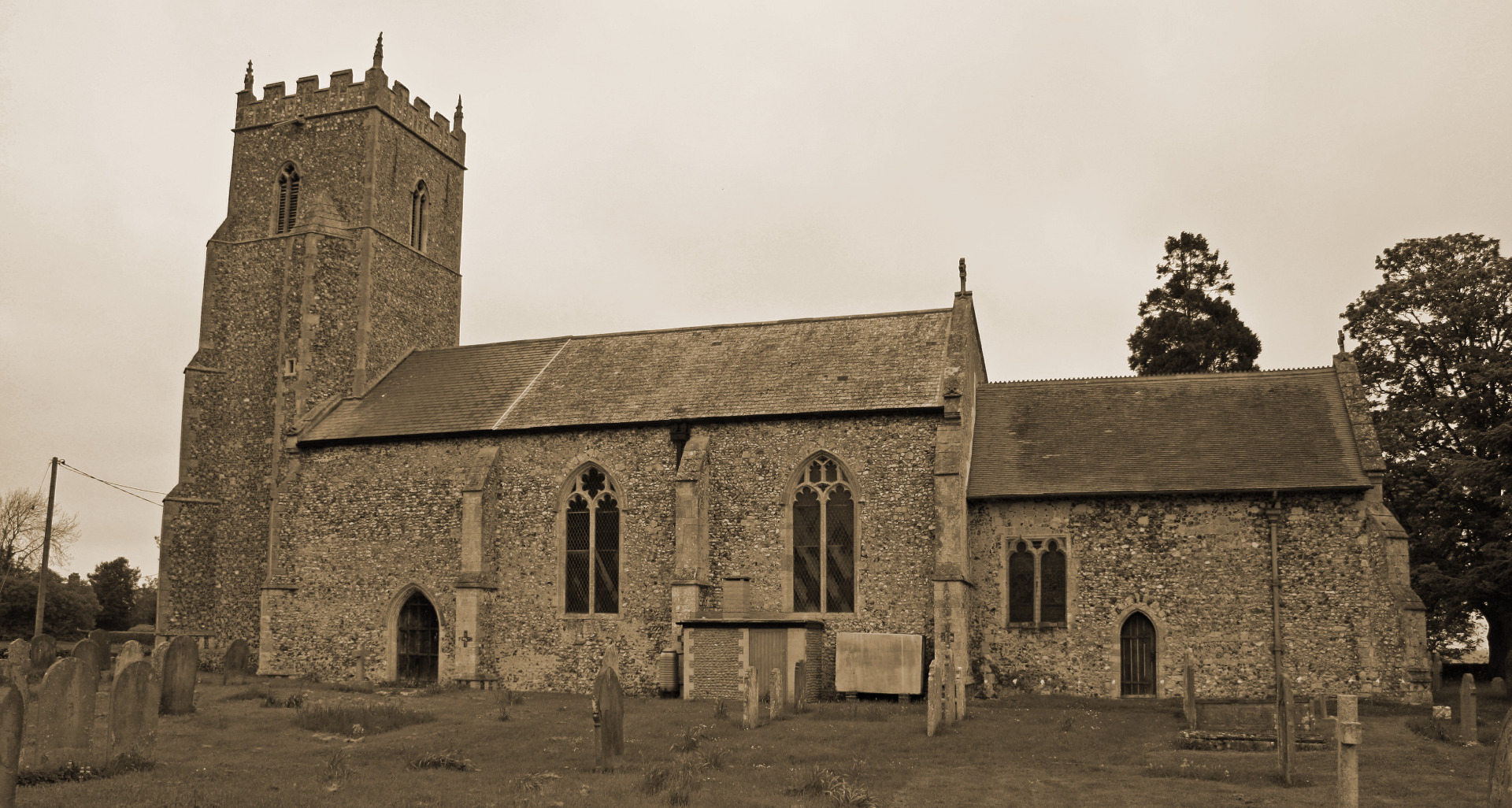Parish Registers
What the vicar wrote ...
Please note that many early documents were written in Latin. Clerics and lawyers used latin as the principal language of official documents, some commentators stating that was mainly to retain the exclusivity of their callings. The parish records of Tharston, especially the earlier ones, were in Latin or part Latin and have been transcribed so they appear in normal English. This has involved using known lists of Latin words and phrases for translation and common equivalents of Latin first names. (Further complications arise when accepting that there are differences between 'church' and 'scholar' Latin!)
Two good examples of information on Latin for genealogists are on the Links page.
The earlier Tharston baptism, marriage and burial records are mostly in Latin and are also very difficult to read. We have included these transcripts but please note that they are subject to updating as time and expertise allows. If you are interested in these, please revisit them on a regular basis and check when last updated.
Parish Records

Generally Parish records fall into 4 categories; baptisms, banns, marriages and burials. These come from various sources and will be added to and updated as time permits. In time it is hoped that we have a single list of inhabitants and all the information we can find about each one - Tharston's Family Tree!
Most of the data is available in separate documents, the contents can then be copied and pasted into other software packages to be interrogated or manipulated if needed. See the Publications page.
Transcribers frequently encounter difficulties when looking at the earlier registers as they are often in a poor state, badly written and sometimes in a church dialect of Latin, further complicated by ecclesiastical year references! (This page may have been last updated in vicesimo nono die Martii 1686 - the date translates to the actual date of 29th March 1687!)
Although there are only four categories, from these other information is often available; many baptism records give the date of birth and the names of the parents, marriage records can indicate levels of literacy and burial records can give close relations' names.
Archdeacons or Bishops Transcripts

As well as the actual Parish registers, an Act of 1598 required Church ministers to make copies of their parish registers and send them to their Archdeacon or Bishop every year. These copies are known as Archdeacon Transcripts or Bishops Transcripts. The copies were made and sent to the diocese office every year until the mid 1800's. As the transcripts are copies they are open to errors in copying, to not containing all the information that is in the original registers and, on some occasions, they may contain more information than in the originals. There may be gaps between 1649 - 1660, during the Commonwealth period many parish registers ceased to be kept or were hidden away by clergy fearful that they might be removed from the parish.
Bishop/Archdeacon's Transcripts were not required to be made during these disruptive times. Within the transcriptions may be some Archdeacon's or Bishop's Transcripts.
Civil Registration

Although not Parish records, these records provide further insight into the general populus and used in conjunction with Parish records can help to clarify inconsistancies.
On 1st July, 1837 a civil registration system for births, marriages, and deaths was introduced in England and Wales. These events were recorded by local District registrars, who reported to the General Registrar Office (GRO). In 1927 this registration was expanded to include stillbirths and adoptions.
The General Register Office maintains a national index of all births, marriages and deaths registered in England and Wales. The index for each year is split into quarters (March, June, September & December), and is arranged alphabetically by surname. From 1984 to the present, the Civil Registration Indexes are ordered by surname for the whole year. For births and deaths, the Index is organized by the date when the event was registered, not the date that the birth or death actually occured. Marriages are shown in the quarter in which they actually took place. By law, after 1874, births had to be registered within six weeks and deaths within eight days.
This information includes the surname, first name, registration district and the volume and page of the General Register Office reference. Beginning with the September quarter of 1911, the mother's maiden name was added to the index for births. From 1912, the spouses name is included in the index for marriages. The age at death is included in the GRO Index beginning in 1866, and the date of birth for death registrations was added in 1969.
Some examples of this data may at some point be included within this website but it will definitely have been used in the verification and checking of accuracy for other information.
One 'problem' found when using these records is that no actual place is named. All people with Civil Registration entries and who were in Tharston will be entered as being registered in the district of Depwade - but Depwade had many named places within it!

Page last updated: 27 Jul 2019 by NP

